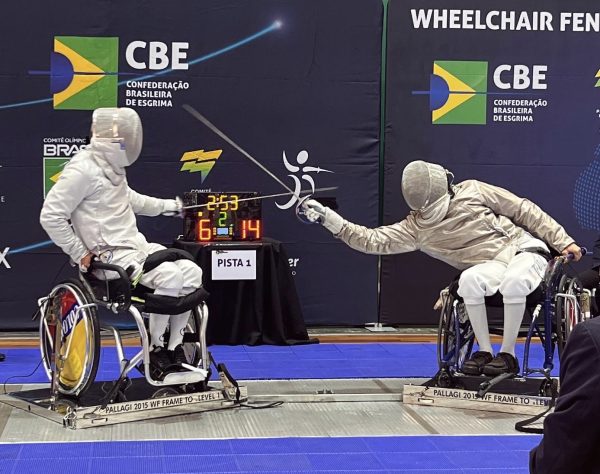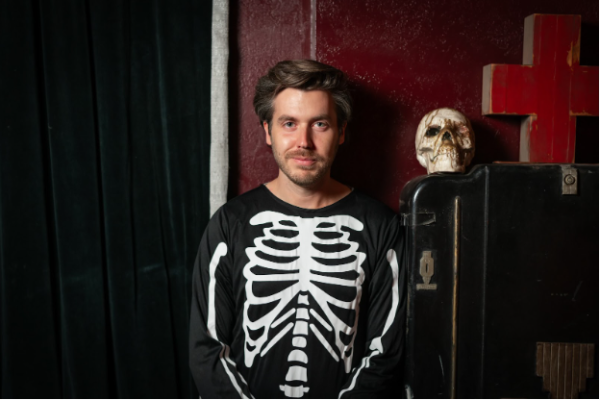Centennial Participates in 2019 Hour of Code
Words: Alexandra Valerio
To promote coding careers for students, Centennial will be hosting the Hour of Code event from December 9 to 15, and students from all grades will be able to practice coding with staff at Centennial.
Daleth Sendin, a Centennial Technology teacher, has been in charge of the Hour of Code event since it was adopted by the county. He mentioned that during his first Hour of Code, they “didn’t have chromebook[s] [or] computer labs like we have now.”
Sendin sent Centennial staff the Hour of Code 2019 materials so that the staff can properly show students how to code. Each year the English and Art departments participate. Believing that there is overlap between math, science, and computer science, Sendin wishes he would have more participation from these departments because “there is a lot of applicable stuff with the Hour of Code.”
Sendin has recruited staff as well as students from computer science backgrounds, such as Girls Who Code, and additional groups who are interested in participating in the event.
Junior Adam Goldstein has participated in the Hour of Code for all of middle school and two years of high school, but he also has a lot of programming experience outside of Hour of Code. He is knowledgeable in 10 programming languages, has maintained the chseagletime.com website, and has created VR headsets with his friends.
“I respect [the Hour of Code] vision, but [I] disagree with their focus,” says Goldstein. “I have seen [a] lack [of] an actual introduction to the main skills programmers use. [But, I believe] there are some [skills from the Hour of Code] that are beneficial.”
“I would want to see more activities like creating a simple sorting algorithm where you can only compare two objects at a time and choose to swap them or not… those sorts of conceptual higher level problem solving activities are much more similar to actual problems programmers face,” Goldstein reiterates.
Goldstein feels it would be better to spread “curiosity to [new learners and] encourage them to keep exploring computer science.” He feels that it is “more satisfying than turning code into a game.”
Peter Ganunis, a junior, has also done the Hour of Code for three years in middle school and two years in high school. His passion for coding, however, developed outside of the Hour of Code.
Ganunis does a variety of aesthetic-centered work with web design and video game development. He is the founder of the Technology Seminar and has experience teaching kids at CodeNinjas, where he teaches computer programming to kids ages 7-12. He also belongs to CodeRead, a non-profit that teaches Java programming to middle school students at Burleigh Manor.
“[The Hour of Code] has [the] ability to raise interest in computer programming. It succeeds in making computer programming seem accessible and gratifying,” said Ganunis.
According to Ganunis, Hour of Code emphasizes the basic principles of coding and allows it to be accessible for beginners. He believes in order to make it even more successful, it should have more gamification.
Deja Grissom, a senior, participated in the Hour of Code as a junior. She found Hour of Code beneficial.
“I think everyone should know how to code because technology is such a pivotal element in our society, everyone needs to know how to work the basics of a computer and smartphone,” she said. “It doesn’t mean anything if you just know how to press a button and a screen comes on. But to know what triggered the button and all the mechanisms that go inside of your phone for it to function… that’s important.”
Ellena Lee, a junior, participated in Hour of Code as a sophomore and it peaked her interest in coding. “It’s really interesting because the coding gives information not only about how to code in computers but also about how to collaborate the code with my hobby.”
For the Hour of Code event, Sendin encourages people to participate in coding and understand the basic functions of technology. “We are all in a technological age where we interact with digital information all the time.” Sendin believes that “getting involved in the Hour of Code and learning some of those basics or how basic function works” will help people to become knowledgeable and be able to “expand their horizons” as well as “how they are interacting.”
nk/pb/ks
For more breaking news and photos, follow The Wingspan on Instagram and Twitter @CHSWingspan.




